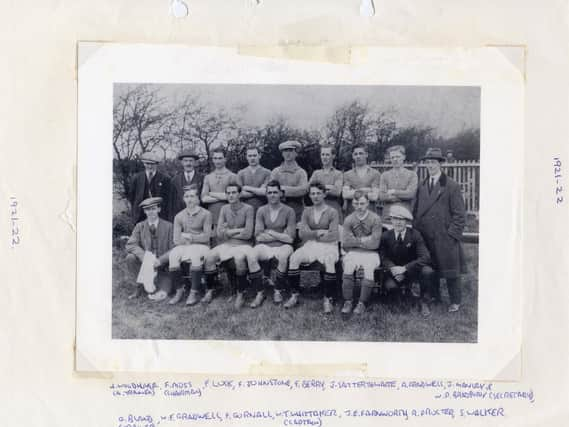When Morecambe FC found a home to call their own


This week, club historian LAWRENCE BLAND takes up the story further with their second season in 1921/22...
Playing football on the cricket field was not popular, and when the FA told the football section to separate itself from the cricket section and become independent, the club had to find a new ground.
Advertisement
Hide AdAdvertisement
Hide AdAfter looking at some land behind the horse tram depot – now Asda – in Lancaster Road, it was discovered that this was earmarked for housing.
They went further out on Lancaster Road to near the Half-Way House, and some rough pasture was acquired, with the president of the supporters’ club, Mr Christie, arranging the rent of the field.
Originally planned to be railed like an oval – similar to the old layout at Lancaster’s Giant Axe – it wasn’t built that way, with stands planned for all four sides, with a capacity of 8,000 to 10,000 when finished.
A wooden stand was built to hold 700, which lasted until 1962 with a covered standing area at the Lancaster end – called the ‘Scratching Shed’ – constructed and, with much repair, lasting until 1967.
Advertisement
Hide AdAdvertisement
Hide AdThe ground was called Rosebery Park and, after two trial matches on the new field, the ground was officially opened on August 27, 1921 with another visit from Fleetwood who again won, 4-0 this time.
Morecambe’s team on that day was: Sloane, Johnstone, Kirkbright, Peel, Whittaker, Farnworth, Cope, Gornall, Aldred, Gradwell and Morris.
The match attracted great interest, with a boat sailing from Fleetwood to Heysham which linked up with the electric trains to Promenade Station, from where charabancs ferried fans to the ground.
The horse tramway company ran extra buses from Lancaster, which lifted the gate to about 3,500.
Advertisement
Hide AdAdvertisement
Hide AdNorman Whittaker scored Morecambe’s first goal at the new ground in a 1-1 draw with Bacup Borough on September 10.
In all, 47 players were used in another season which saw no cup wins and their position in the Lancashire Combination dropping to 14th from 13th the year before.
Among those players was Dick Woodhouse, who had joined the club in November 1920.
Born in Morecambe during 1901, he was a half-back who had played for Morecambe Central School, White Lund, Poulton Athletic and Bare United.
Advertisement
Hide AdAdvertisement
Hide AdExcept for a spell with Skerton Athletic in 1924-25, he remained with the club for 18 seasons, winning the Lancashire Junior Cup in 1925-26, and the Parkinson Cup for the reserves in 1923-24.
He was a trainer for the reserves from 1933-38, making his last appearance for them on Christmas Day 1937.